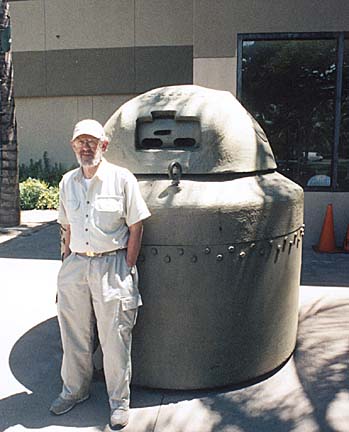


Forts guard
century of history
Historic Honolulu
By Burl Burlingame
Star-BulletinTHE invention of the fast and reliable coal-or-oil burning steamship made the world seem smaller. Suddenly Hawaii wasn't just a destination, it was a vital link in a sea-going economy.
Which explains, pretty much, why the United States snapped it up when they did. And why other nations cast covetous eyes on the prize. The Americans began to build up Pearl Harbor and -- to protect it -- began to fortify the rest of the island. Oahu became known as the "Gibralter of the Pacific," bristling with guns pointed seaward. In the years up to and through World War II, military construction changed the face of the island.
Hard to tell nowadays. No specific military architecture is included among the state's listings of historic sites. Unusual structures, such as the hollow hill of Fort Barrette near Barbers Point, have huge, echoing galleries that are dusty and derelict, awaiting either intelligent conservation or bureaucratic neglect. Other structures, small as an abandoned pillbox, serve as reminders of a time when the world was less settled.
Emmanuel "Ray" Lewis, probably the pre-eminent fortifications scholar in the country -- his "Seacoast Fortifications of the United States" has been in print for more than 30 years -- mused on this while visiting the islands recently.
"Oahu was extremely well fortified, the most strongly defended island in the world," said Lewis, standing in the big gun pit atop Battery Randolph in Waikiki, now known as the U.S. Army Museum of Hawaii. "It was the culmination of a period of military defensive architecture that lasted exactly 150 years, and which vanished when the aircraft bomber was perfected in World War II."
This is the period that saw the building of great forts at strategic points around American port cities, the defensive assumption being that an enemy invasion, siege or blockade would be directed at the cities rather than the countryside. It paralleled improvements in long-range cannon that could be fired with great accuracy in two dimensions -- such as the surface of the sea. Aircraft moved strategy into three dimensions.
"It was an entire military philosophy devoted to passive defense, the precursor to Star Wars. This kind of thinking was a product of the era, and very different from modern strategies of mobility."
Lewis grew up in San Francisco, another port city with extensive fortifications, and studied architecture and history at Berkeley. While in ROTC at college in the late '50s, he witnessed the sudden dismantling of the Coast Artillery branch of the army.
"It happened nearly overnight -- the airplane rendered the Coast Artillery unnecessary. It was abolished real quick, so quickly that no historians had a chance to build expertise in the field. Because of where I was at the time, and my interest in the subject, I became the link in the gap between the Coast Artillery and history."
The coast artillery specialized in enormous "rifles" that sniped at ships over the horizon, and banks of howitzers and mortars that would lay down a barrage closer to shore. These weapons would be gathered in "batteries" linked to distant sighting stations, such as inside the peak of Diamond Head and Punchbowl. The widely separated sighting stations allowed triangulating targets with accuracy.
They also left a physical legacy of odd, squatty concrete structures spotted about the island. Waikiki's Battery Randolph was so strongly constructed that wrecking balls shattered on its flanks in the early 1970s, and the Army gave up and created a museum on the site. It is currently the most popular Army museum in the United States.
But in the original rush to demolish the Coast Artillery, Battery Randolph's rare gigantic rifled cannons were chopped up and smelted. The building's remaining concrete walls have an economy of design, an air of utilitarianism that's unique.
"I think of it as architectural chastity," said Lewis. "Military architecture is kind of pure and clean and functional and looks very modern. It gives you very little information as to what era it's from. People see gun emplacements like this and think they're World War II-era, when they're more likely to date to 1905."
Given their contribution to local and national history -- in some ways, making sure there IS a national history -- should military architecture be preserved?
"Some people have such zeal to preserve military sites that they can't make an intelligent selection," said Lewis. "Certainly a representative sampling should be saved, examples of each type of site. But the cost of saving everything would be prohibitive."
The U.S. Army Museum of Hawaii, inside Battery Randolph, is "certainly the BEST single use of a rededicated military structure in the United States," said Lewis. "It's conscientious and appropriate. It's unfortunate only that the 14-inch guns were lost. Only a few were built."
Indiscriminate preservation, said Lewis, "could stick us with some real turkeys. On the other hand, the military itself preserved the character of the places it inhabited. Diamond Head, certainly, should be preserved, and it is mostly pristine today only because it was inhabited by the military. Vast areas near San Francisco would not be preservation land today if it weren't for military landholders keeping out developers."
This is part of a yearlong series reflecting on old Honolulu.
Click for online
calendars and events.